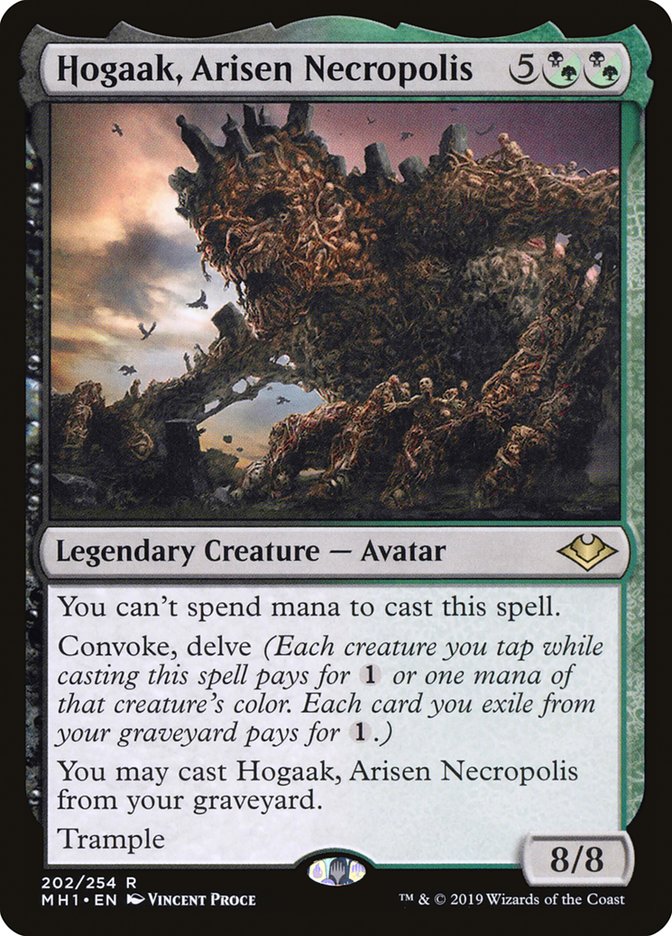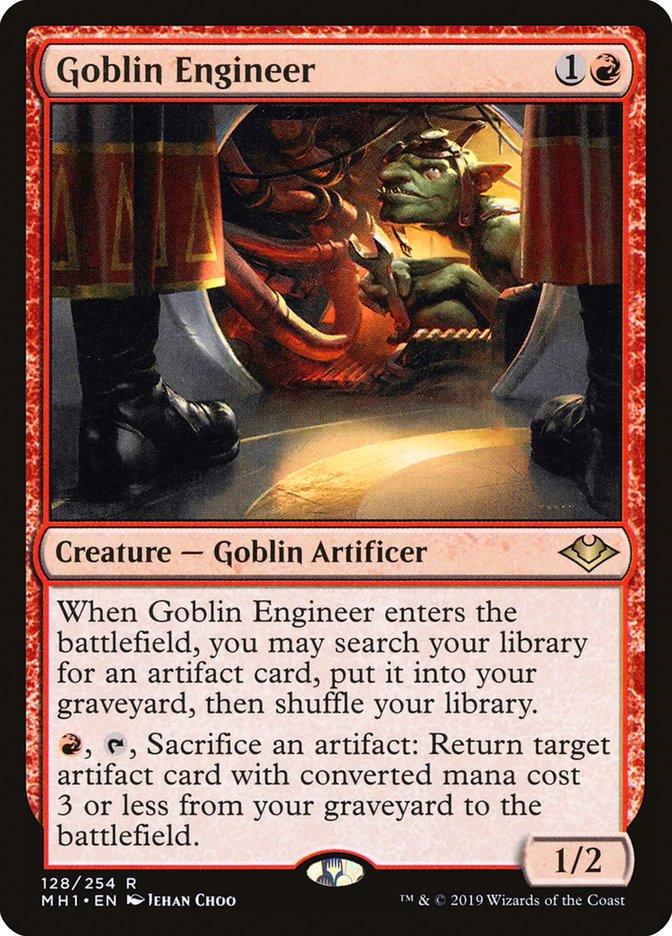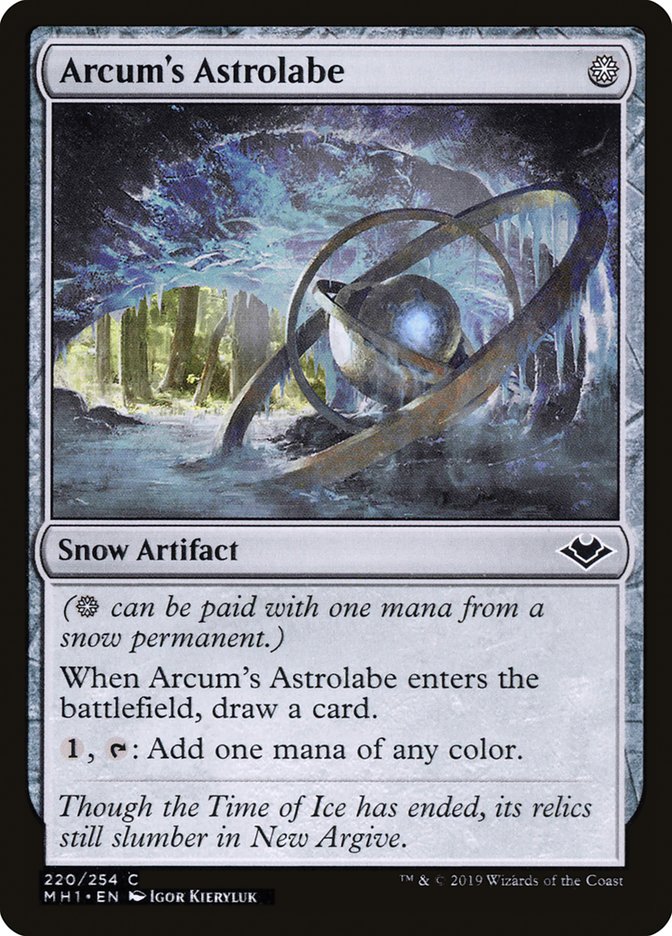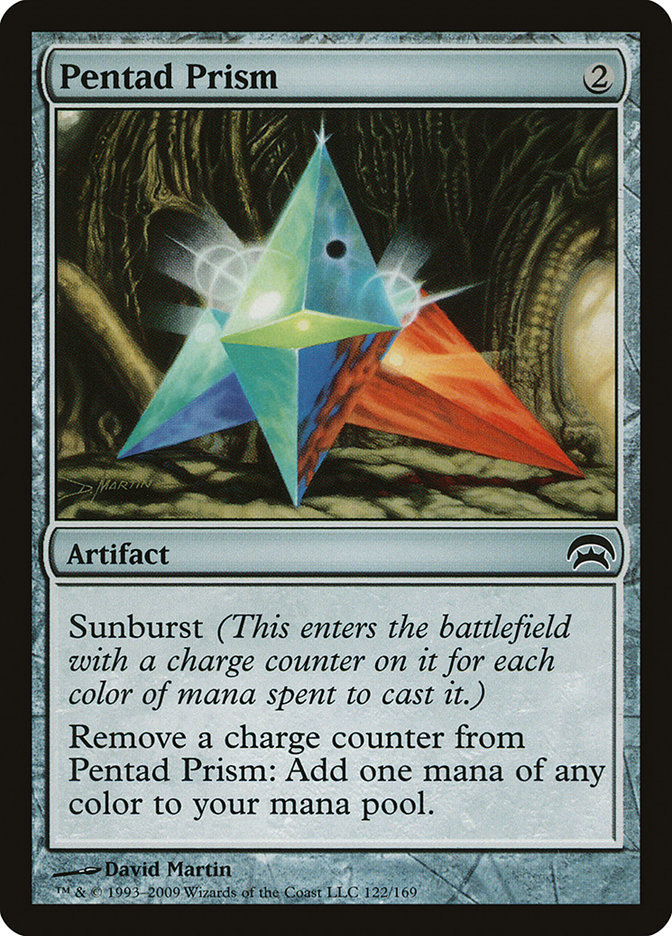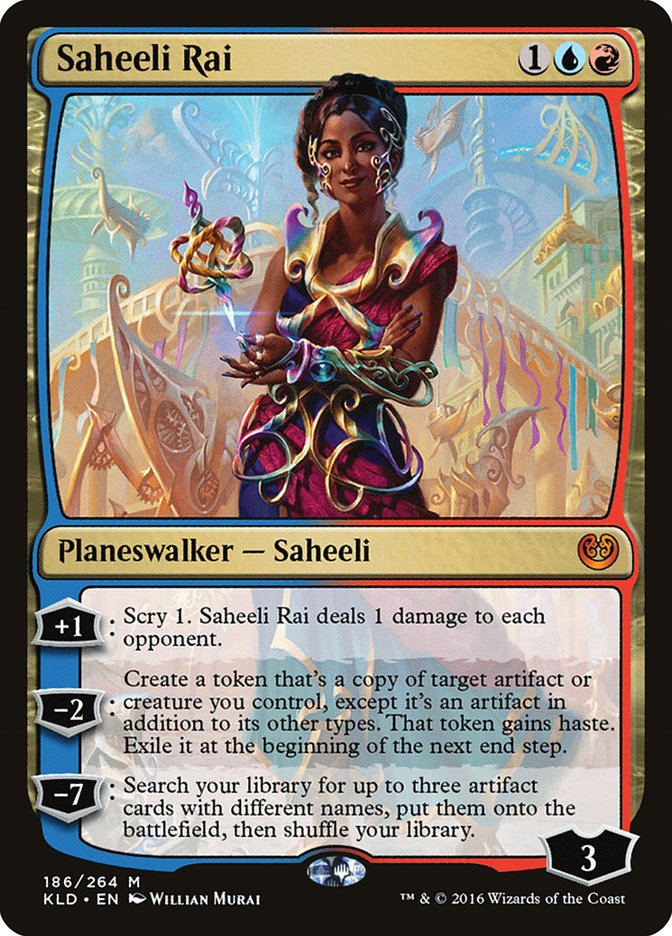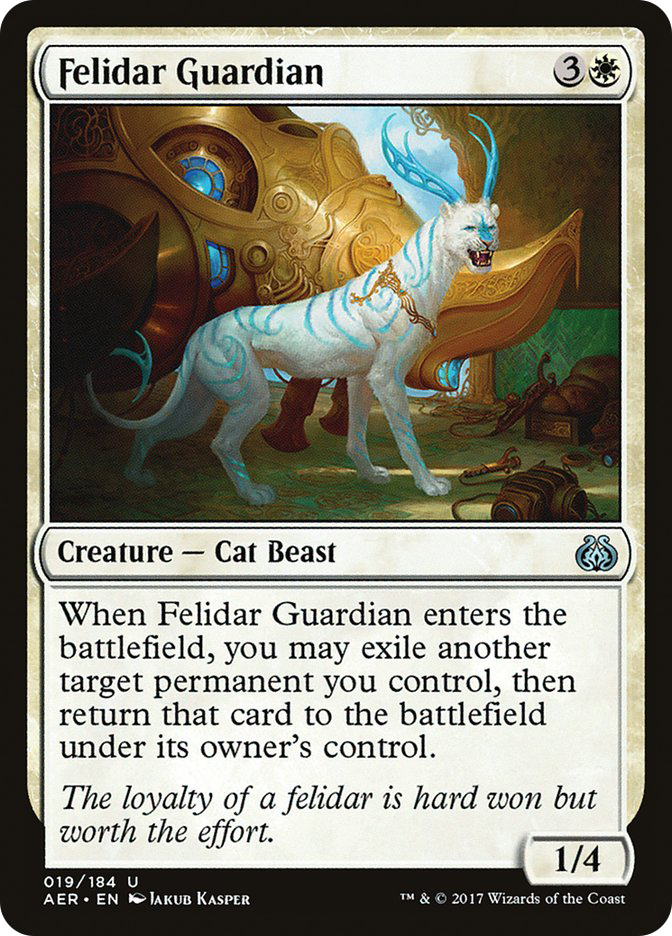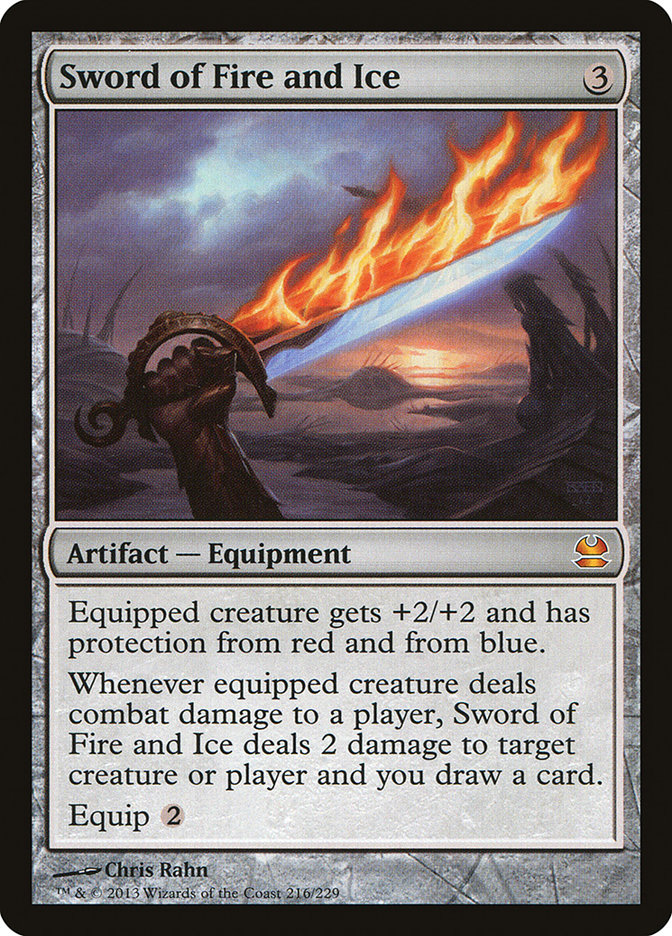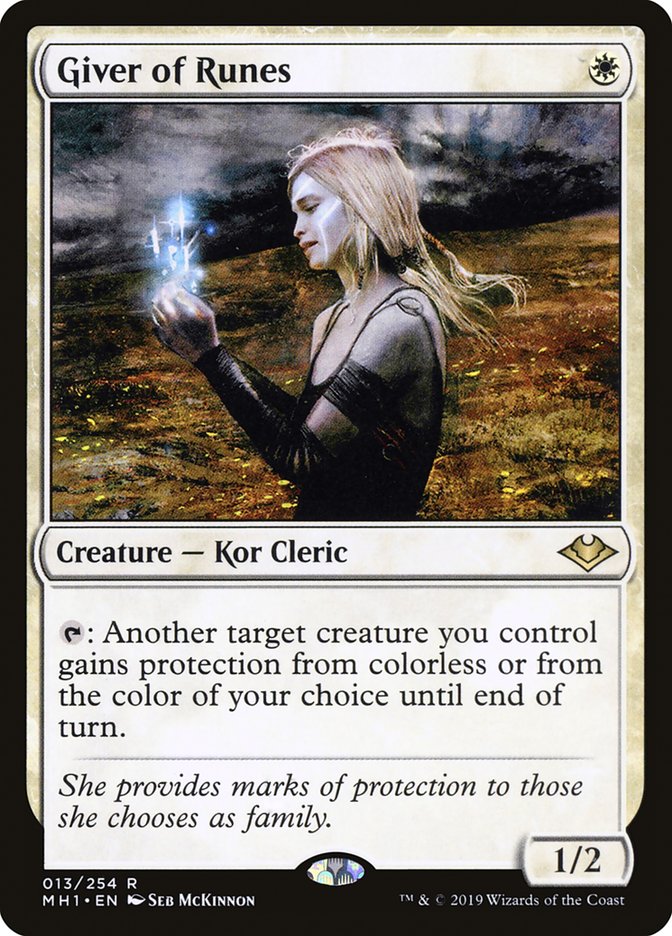That was me, eyes glazed and mouth agape, at 11am yesterday morning, looking at the latest Banned and Restricted announcement. It was a foregone conclusion that Hogaak, Arisen Necropolis would meet its maker, but to see Faithless Looting swapped for Stoneforge Mystic took me by surprise.
Faithless Looting is so powerful that I’ve only registered a Modern deck without it once in the last year and had no plans to change in the foreseeable future. And Stoneforge Mystic is one of the most powerful cards in the history of Standard, has been a Legacy staple for years, and has yet to see the light of day in Modern because it was too scary.
When you combine those two incredibly important card changes with the fact that much of Modern Horizons has been suppressed by Hogaak, we are entering a new era in Modern, and right now it’s the Wild West.
Step one will be figuring out exactly how to use Stoneforge Mystic, and the obvious place is to model after one of the most successful decks in the history of Magic: Caw-Blade. There are plenty of similar tools in Modern and base-Azorius decks have had plenty of success in the format over the last year.
Creatures (8)
Planeswalkers (7)
Lands (26)
Spells (19)

But Modern has always been a haven for unfair decks, and despite being a hallmark of midrange strategies, Stoneforge Mystic is at its best when supporting a great combo. This is because the strength of Stoneforge Mystic is that it can dominate a game by itself, thus providing almost an entire additional angle of attack at the low cost of six deck slots.
Of course, you need some extra creatures around to hold Equipment when the Stoneforge Mystic dies, but that’s not difficult in a format as large as Modern. Once you meet that requirement, you have a deck that forces the opponent to answer Stoneforge early while also having to worry about your deck’s combo plan. The super-Squire enables this versatility from a deckbuilding perspective more easily than perhaps any other card in Magic’s history.
So let’s look at a few of the decks that can easily incorporate Modern’s latest entry in order to create or bolster a fair backup plan.
Four-Color Urza
Creatures (7)
Planeswalkers (2)
Lands (20)
Spells (31)

This is the most obvious place for Stoneforge Mystic among existing combo decks, since the card functions as a tutor for one of the combo pieces. The current lists have been playing Goblin Engineer to fill the same role, with some additional cards like Ichor Wellspring and Chromatic Star to allow Engineer to serve as a card advantage engine.
Stoneforge Mystic is worse than Engineer at enabling the combo, since putting Sword of the Meek directly into the graveyard is more efficient, but Stoneforge Mystic provides immediate card advantage without having to play subpar cards in your deck, and Batterskull bolsters the deck’s midrange angle, which should prove more useful now that a decline in graveyard hate will also bring an increase in cards like Ancient Grudge, Collector Ouphe, and Stony Silence.
That said, there will still be graveyard hate around, and the swap from Engineer to Stoneforge Mystic helps dodge that hate, as well as allowing the deck to cut red entirely, with the Pyrite Spellbomb sticking around since its easily enabled by Arcum’s Astrolabe, Mox Opal, and Pentad Prism.
I’ve included Welding Jar in the maindeck to help protect Batterskull from the coming uptick in artifact removal as well as the combo pieces, while also helping to enable Mox Opal more efficiently, which is something this deck can struggle to do.
I wrote last week about how this deck should be poised to thrive in a post-Hogaak metagame because it has so many different gameplans and its main plan is powerful enough to contend on its own; gaining yet another powerful card will only bolster the archetype.
Four-Color Saheeli
Creatures (16)
Planeswalkers (8)
Lands (20)
Spells (16)

Many of you weren’t around for the days of Caw-Blade, but towards the end of its life, between the May release of New Phyrexia and its banning in June, many players opted to incorporate Splinter Twin and Deceiver Exarch, building a monster that could halt aggressive decks, grind against control, and, if necessary, combo as early as Turn 4. Look at this deck and just contemplate how all the cards were legal in the same Standard format:
Creatures (10)
Planeswalkers (4)
Lands (18)
Spells (28)
- 3 Plains
- 3 Mountain
- 3 Island
- 2 Into the Roil
- 2 Spell Pierce
- 2 Dispel
- 3 Splinter Twin
- 4 Preordain
- 1 Sword of Feast and Famine
- 1 Batterskull
- 1 Sword of War and Peace
- 3 Dismember
Sideboard

The Saheeli Rai–Felidar Guardian combo isn’t quite as powerful, since both pieces must be cast at sorcery speed, but it’s similar enough that I want to find space for Stoneforge Mystic. Between its many planeswalkers and creatures with enters-the-battlefield abilities, this deck already has a robust attrition plan and plenty of incidental bodies to equip with a Sword of Fire and Ice or Batterskull.
In fact, I’m so confident in the deck’s fair game that I’m willing to shave one copy of Saheeli Rai to fit everything. Most Twin decks only ever played three copies of the namesake card since it was the worst combo piece, and in this deck Felidar Guardian is the better combo piece since it can blink planeswalkers.
Lightning Helix has been the preferred second removal spell to Path to Exile in this deck, but the versatility of Abrade in answering Equipment and Thopter Foundry, as well as the reduced strain on the deck’s mana, gives it the edge for now.
Much like the old Standard Four-Color Saheeli deck, you’ll want to be patient with the combo here, especially because it can be deployed in a single turn once you have six mana (Felidar Guardian can blink a land to provide the seventh mana).
Teferi, Time Raveler offers great protection for the combo as well as a solid tempo play when you’re setting up with planeswalkers, and it’s not difficult to grind through your opponent’s resources with Ice-Fang Coatls and Wrenn and Sixes until they have nothing left and the combo seals the game before they can draw back into things.
I also expect the Sword to be a more popular target in this deck than many others, since it’s already quite threat-dense and the Swords let you upgrade all the Snapcaster Mages, Elemental tokens, and Ice-Fang Coatls into significant threats, but be careful not to lock out Saheeli Rai from targeting Felidar Guardian due to protection from red and blue.
With access to all five colors, the sideboard here is a smorgasbord, but typically focused on bolstering the fair game as players bring in hate for the combo, another hallmark of combo decks with strong backup plans. I’ve particularly geared towards the Mono-Green Tron matchup, which should be difficult outside of games where you can combo early or get to six lands quickly.
Bant Devoted Devastation
Creatures (22)
- 1 Eternal Witness
- 4 Devoted Druid
- 4 Noble Hierarch
- 4 Stoneforge Mystic
- 1 Walking Ballista
- 3 Vizier of Remedies
- 1 Deputy of Detention
- 4 Giver of Runes
Planeswalkers (4)
Lands (16)
Spells (18)

This is the most awkward fit on the surface for Stoneforge Mystic, but my problem with the Devoted Druid decks has almost always come down to the lack of a solid backup plan. We’ve seen lots of lists turn to Karn, the Great Creator to help out there, but that doesn’t make up for the fact that the creatures that comprise the combo are weak cards on their own and Karn costs a ton of valuable sideboard space. Now the mopey 0/1s and 2/1s that sit around while your opponent focuses all their removal on Devoted Druid can get into the red zone and generate a significant advantage.
I also like that adding Stoneforge Mystic gives the deck another must-kill two-drop, which ratchets up the power of Giver of Runes to another level. Giver is one of my sleeper picks to emerge as a top contender now that Hogaak is gone, since it’s a powerful card but at its worst in the kind of degenerate metagame that Hogaak forced Modern into. Against decks that are trying to one-for-one with lots of removal, Giver represents an on-curve layer of protection for our most powerful threats, which should not be underestimated.
The opening of Giver of Runes into either Devoted Druid or Stoneforge Mystic will overload lots of draws and lead to plenty of early victories, while the power of Stoneforge Mystic means the deck isn’t dead late, even if the Stoneforge itself is killed.
After sideboard, you can gear up to play more of the fair game with Tireless Tracker, Path to Exile, and Gideon, Ally of Zendikar or bring in extra protection for the combo in the form of Dovin’s Veto, Spellskite, and Burrenton Forge-Tender.
Welcome Back, Stoneforge Mystic
There’s going to be a lot of talk of Azorius Stoneblade and other fair decks usurping the throne in Modern, with the looming threat of big mana decks like Mono-Green Tron and Scapeshift to keep them in check, but that’s only because those are the obvious remaining decks in a world where Faithless Looting is gone and the most degenerate Ancient Stirrings deck, Ironworks, is long dead.
It’s also a bit of wishful thinking from the throngs of people that want Modern to be a haven for midrange strategies. A lot of power has been pumped into them recently, with cards like Stoneforge Mystic, Seasoned Pyromancer, Wrenn and Six, and Force of Negation, and you should expect some base Azorius and Golgari decks to perform well in the coming weeks, but the biggest rewards will be given to those who find the next great unfair strategy and fly under the radar while everyone is gearing up for the midrange arms race.
If you’re a die-hard midrange player, enjoy this time while it lasts, because Modern will always be a place for powerful combos and synergies to reign, and it’s only a matter of time before the next king is crowned. Don’t be surprised if your champion, Stoneforge Mystic, is turned to the dark side.


